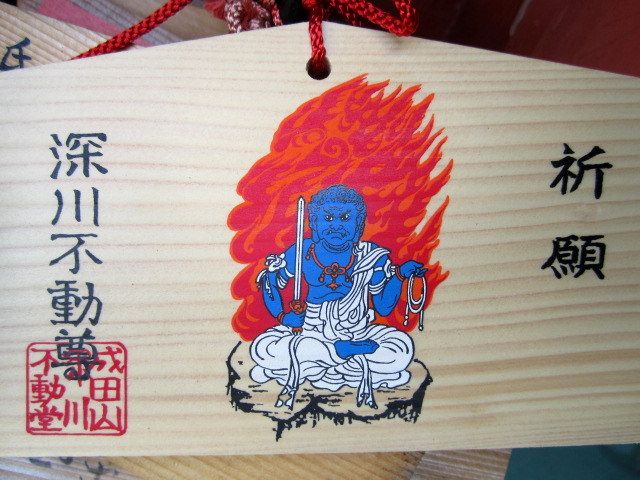Tourism in Japan : Fudodo 深川不動堂
The beginning of Fukagawa Fudodo
Kabuki actor Ichikawa Danjuro showed Acala's act play early in the Edo period. With this raised the interest of the Acala in Narita-san among the commoners.
Influenced by this Acala's act play,
The Edo people wanted to see the Acala in Narita-san, they gave a strong request that made to Narita-san.
In Genroku 16th year (1703) Narita-san carried out "taken out" of Acala. That was held at Ei taiji Temple.
This is the beginning of Fukagawa Fudodo.
After that "taken out" was done 12 times through the Edo period until Ansei 3 (1856).
After the Meiji Restoration,
Ei taiji Temple became a abolition temple.
But the immovable faith never ceased.
In 1878, it was decided to form as a "Fukagawa Fudodo" by enshrining the Narita immovable spirit in the present place.
It continues until now.
深川不動堂の始まり
Kabuki actor Ichikawa Danjuro showed Acala's act play early in the Edo period. With this raised the interest of the Acala in Narita-san among the commoners.
Influenced by this Acala's act play,
The Edo people wanted to see the Acala in Narita-san, they gave a strong request that made to Narita-san.
In Genroku 16th year (1703) Narita-san carried out "taken out" of Acala. That was held at Ei taiji Temple.
This is the beginning of Fukagawa Fudodo.
After that "taken out" was done 12 times through the Edo period until Ansei 3 (1856).
After the Meiji Restoration,
Ei taiji Temple became a abolition temple.
But the immovable faith never ceased.
In 1878, it was decided to form as a "Fukagawa Fudodo" by enshrining the Narita immovable spirit in the present place.
It continues until now.
深川不動堂の始まり
江戸時代初期に歌舞伎役者の市川團十郎が不動明王の芝居を披露したことで庶民の間で成田山の不動明王の関心が高められた。そのことが成田山の不動明王に拝観したいという欲求が江戸庶民に強かったといわれる。 元禄16年(1703年)に成田山は不動明王の「出開帳」が永代寺で開催する運びになった。これが深川不動堂の始まりである。その後出開帳は安政3年(1856年)まで、江戸時代を通じて12回行われた。 永代寺は明治維新後、廃寺となったが不動尊信仰は止むことがなく、明治11年(1878年)に現在の場所に成田不動の分霊を祀り、「深川不動堂」として形成することになり現在まで続いている。
Acala





コメント
コメントを投稿